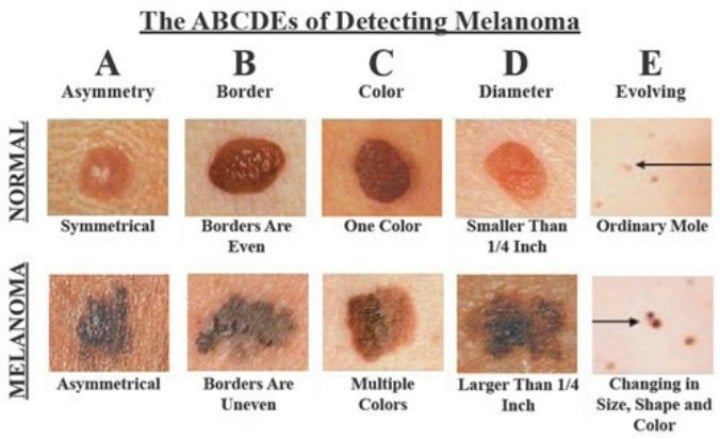
Former Today news reader and host of Mornings on 9, Georgie Gardner, today reminded us how important it is to get your skin checked out by a professional.
Georgie Gardner, 43, posted an image on her instagram account after visiting the skin doctor.
The caption read: “Gentle reminder to be sun smart & get skin checked – squamous cell carcinoma cut out #sore”
And the picture? You guessed it… a few tiny stitches under the nose.
As our health and beauty site The Glow reported….
Everyone has, at least once in their life, spotted a freckle or a mole they haven’t seen before and wondered whether they should do something about it.
“I’ll get it checked,” we promise ourselves. Then we get distracted, move on and before you know it weeks, maybe even years, have passed. The biggest problem is most of us have no idea what to look for. What’s considered normal and what should you be concerned about?
It’s important to be aware of spots on your skin and be conscious about any ways they change, according to Craig Sinclair, chair of Cancer Council Australia’s Public Health Committee
“Melanoma requires skills to properly diagnose, there are simple things you can do to detect early signs. Spots on your skin can change in shape, colour or size, so if you see any change in even one of these three, visit your GP,” he says. “While melanoma is the rarest form of skin cancer, unfortunately it’s also the most likely to kill you.”



Top Comments
I had a freckle that kept scabbing over on my nose. I'd had this freckle since I was a kid. I've always been very aware of my pale skin and am a SPF50 nut. But when it would not heal I thought I'd better get it checked. Turned out it was skin cancer. Luckily it was the"good" kinda SC, if there is such a thing. Got it cut out and now all ok. Fewwww 😅
I had mine checked Tuesday, as a person who is covered in moles, any sudden changes I head to the doctor, atleast checked once a year